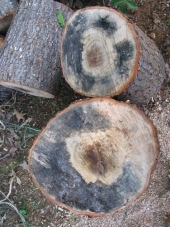If you can import straw(or anything lignin and cellulose rich; the book "Growing Gourmet and Medicinal Mushrooms" has a great list of wood alternatives ) then you can grow oysters, if you can find a source for clean sawdust you can grow just about anything, short of that you still have a couple options
The Almond Agaricus grows very well co-cropped with tomatoes or cucumbers in hoophouses(or anywhere your temperatures are 50-95f) it grows on compost and can yield a pound a square foot.
For colder areas you can grow blewits, they like nitrogen rich compost and only fruit after frosts. The easiest natural way(assuming they grow in your area) to propagate blewits is to throw a bunch of mushroom stem butts in a blender with a little water, macerate then freeze, take frozen block and place inside the top third of your compost pile, check the pile in 3-4 weeks and look for fuzzy purplish mycelium, usually works. Anywhere you spread the compost you'll be inoculating with blewits.
Fieldforest.net has both
Happy spawning






